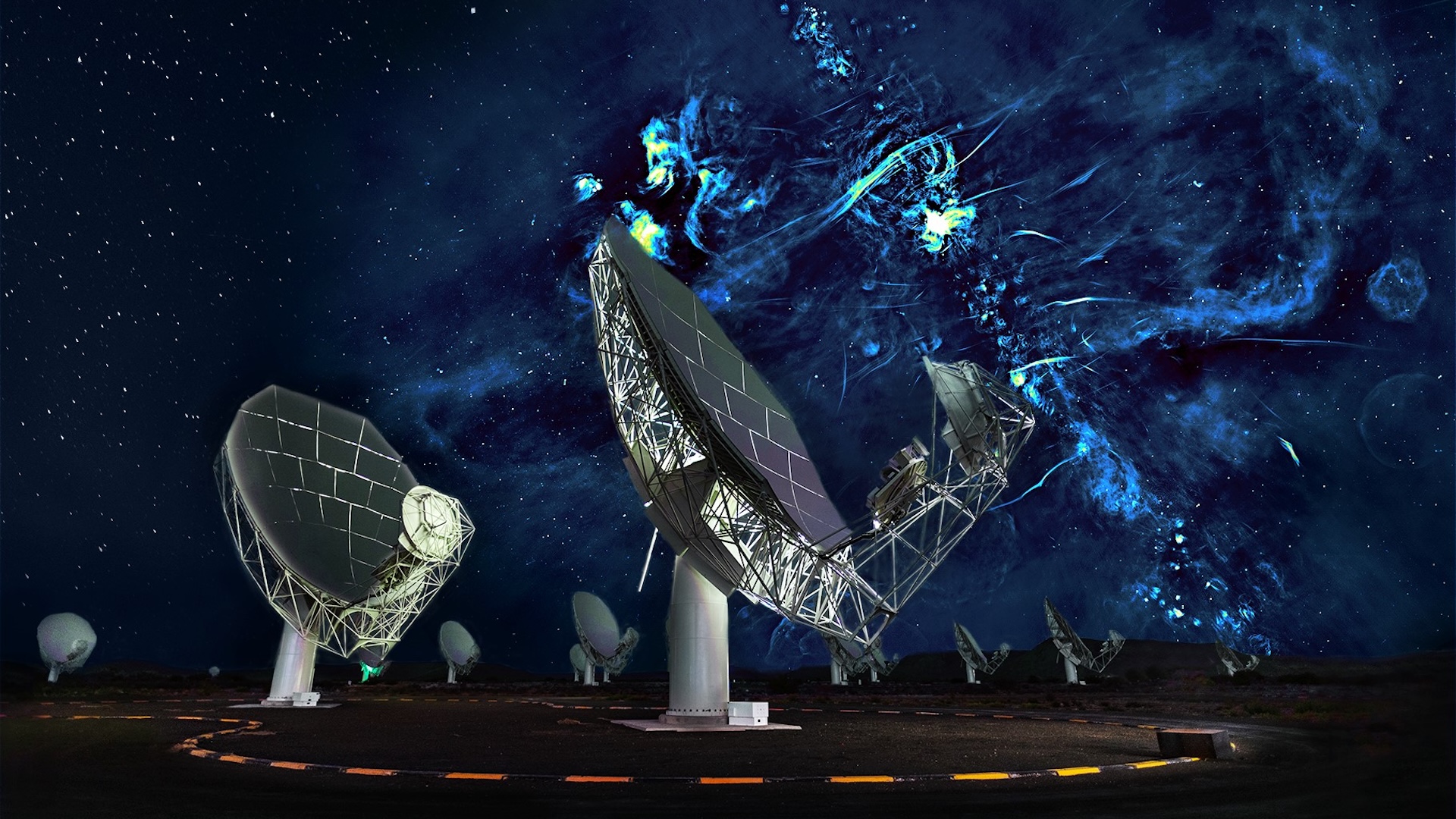A gigantic array of radio dishes proposed for the Utah desert could advance our understanding of physics and help us decode cosmic radio signals. Now, scientists have outlined how it would work.
Beginning in the 1950s, radio astronomy has opened up a powerful view into the inner workings of the universe, revealing everything from how stars form to incredible images of our galaxy’s gigantic black hole. Now, astronomers are building a gigantic array of radio dishes, called the Deep Synoptic Array 2000 (DSA-2000). The array consists of 2,000 radio dishes, each 16 feet (5 meters) across, laid out in a radio-quiet part of the Utah desert.
Now, an international team of astronomers has demonstrated how DSA-2000 will be a premier instrument for revealing some of the most hidden corners, particles and processes in the cosmos.
Because DSA-2000 will have both a wide field of view and a high resolution, it will be like the world’s ultimate digital camera but at radio frequencies, the team explained in a paper uploaded to the preprint database arXiv in May. These capabilities will allow the DSA-2000 to detect a wide variety of phenomena that are not possible with our current radio telescopes.
And there are a whole lot of unexplored radio transmissions in the universe. For example, astronomers think the vast majority of the mass of every galaxy comes in the form of dark matter, an invisible entity that has so far escaped direct detection.
One potential candidate for dark matter is called the axion, a hypothetical particle trillions of times lighter than the lightest known particles. Axions can collect around dense objects like neutron stars, and under the influence of extremely strong magnetic fields (which neutron stars have in spades), they can convert to photons with just the right frequency range that DSA-2000 could pick up those signals.
Related: ‘Staggering’ first images from Vera C. Rubin Observatory show 10 million galaxies — and billions more are on the way
Another candidate for dark matter is called the dark photon, which is like our normal, familiar photons (light particles) but … dark. Dark photons can also collect around neutron stars, where they can get whipped up into a frenzy due to the star’s extreme rotation. In a process called superradiance, the dark photons get boosted to extremely high energies, where they start to resonate with regular photons, giving off blasts of signals that could be directly detected by DSA-2000.
This means that DSA-2000 could potentially offer our first direct glimpse of a new form of matter in the universe. But that’s not all.
In 2023, astronomers with the NANOGrav experiment announced the detection of gravitational waves through pulsar timing arrays. DSA-2000 could take that one step further by precisely measuring the rotation rates of approximately 3,000 pulsars — rapidly spinning neutron stars that pulsate in regular intervals. This would allow the new instrument to find any subtle variations in the spins of pulsars, such as those due to unseen orbiting companions, like black holes or small clumps of dark matter.
Lastly, DSA-2000 could detect tens of thousands of fast radio bursts (FRBs) — tremendous explosions that manifest as blips and bloops in the radio spectrum. This unprecedented number of detections would allow scientists to build a comprehensive survey of the nearby universe, which would aid our understanding of everything from dark energy to the nature of ghostly particles called neutrinos.
The universe is trying to whisper its secrets to us. All the answers are there, if we listen carefully enough.
